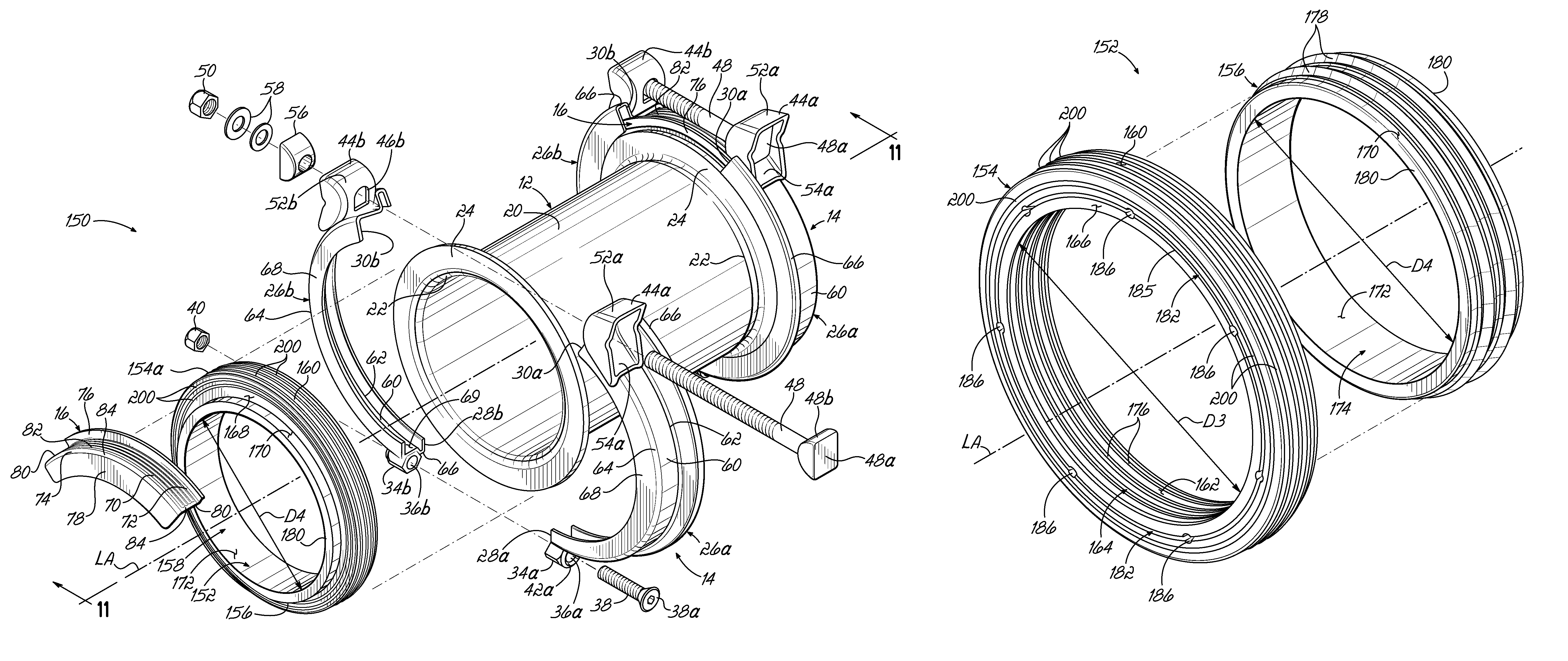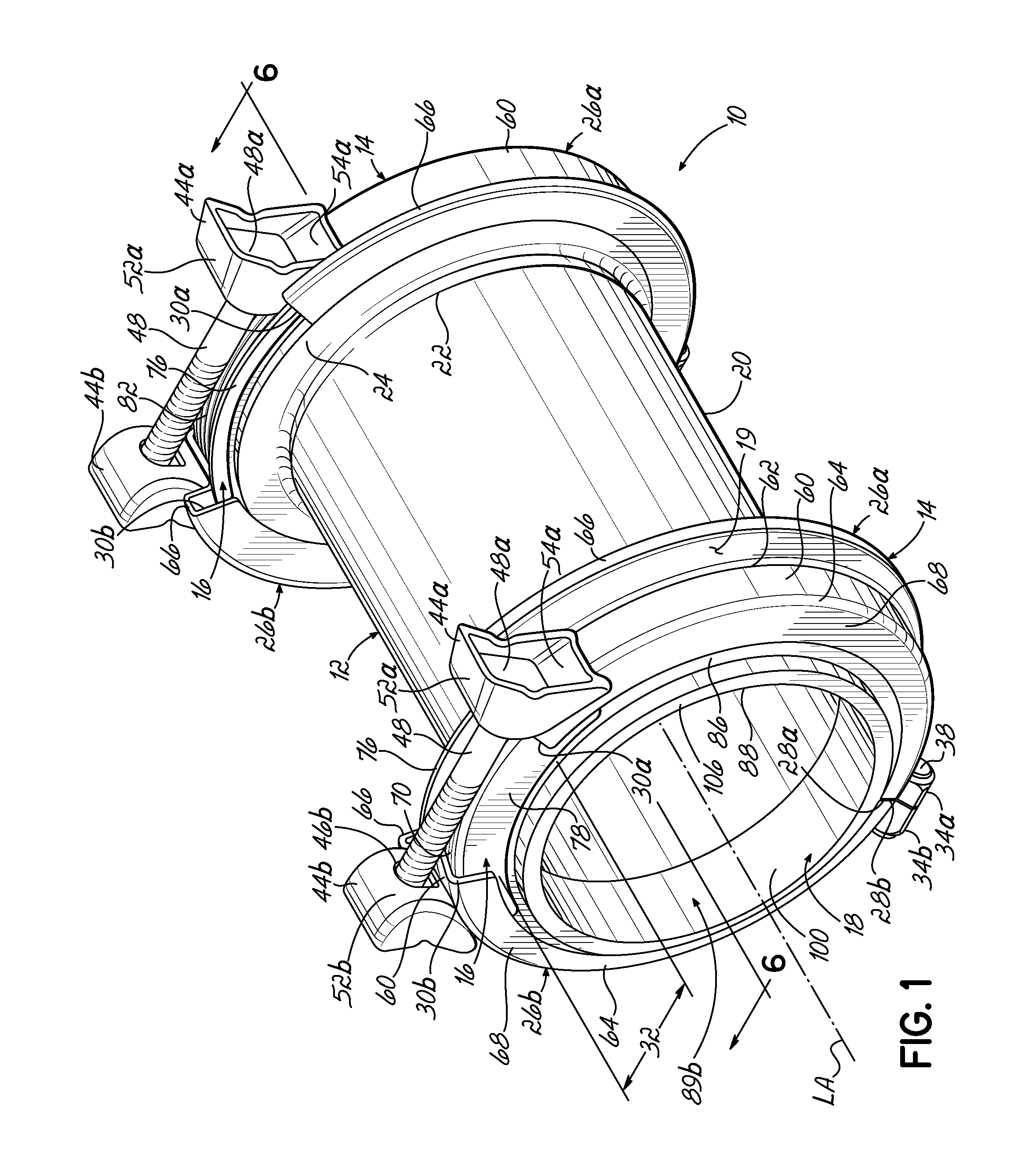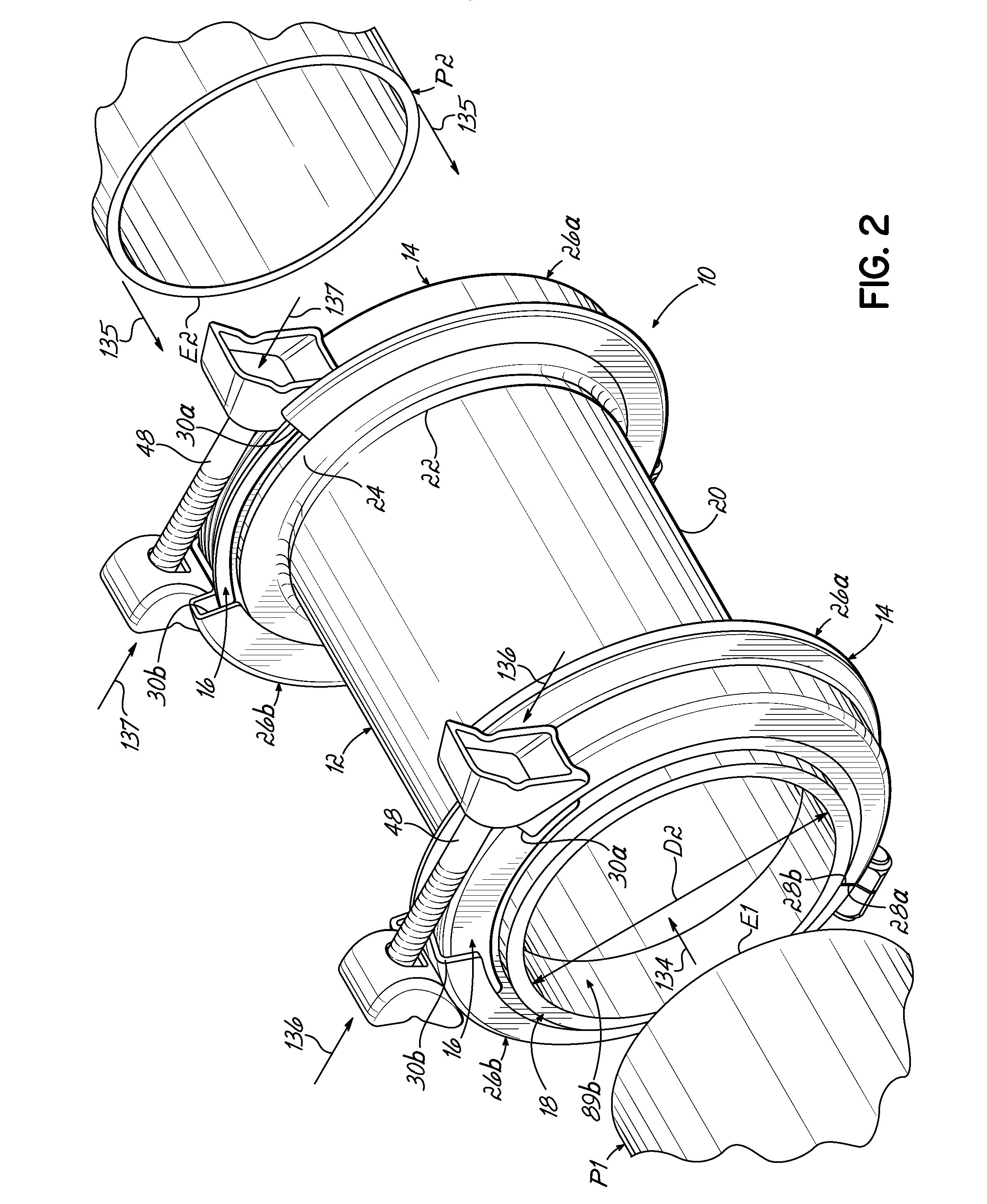Split-ring gland pipe coupling with corrugated armor and annular gasket having pressure assist slot
a technology of annular gaskets and corrugated armor, which is applied in the direction of hose connections, manufacturing tools, mechanical equipment, etc., can solve the problems of affecting so as to improve reduce the cost. , the effect of improving the quality of pipe couplings
- Summary
- Abstract
- Description
- Claims
- Application Information
AI Technical Summary
Benefits of technology
Problems solved by technology
Method used
Image
Examples
Embodiment Construction
[0030]With reference to FIGS. 1 and 2, a split-ring gland type of pipe coupling 10 according to one embodiment of the present invention is shown. The pipe coupling 10 includes a sleeve 12, a pair of split-ring glands 14, a bridge plate or armor 16 associated with each split-ring gland 14, and an annular gasket 18 associated with each split-ring gland 14. In the fully assembled state of the pipe coupling 10, an end E1 of a first pipe P1 is inserted into the sleeve 12 through one of the split-ring glands 14 and the corresponding gasket 18, and an end E2 of a second pipe P2 is inserted into the other split-ring gland 14 and associated gasket 18. The split-ring glands 14 are configured to be tightened onto the corresponding gaskets 18 to compress the gaskets 18 into sealing connection with the respective pipe ends E1, E2. The split-ring gland 14 and the armor 16 collectively define a generally closed annular periphery 19 around the gasket 18, which further ensures that fluid passing thr...
PUM
| Property | Measurement | Unit |
|---|---|---|
| diameter | aaaaa | aaaaa |
| diameter | aaaaa | aaaaa |
| diameter | aaaaa | aaaaa |
Abstract
Description
Claims
Application Information
 Login to View More
Login to View More - R&D
- Intellectual Property
- Life Sciences
- Materials
- Tech Scout
- Unparalleled Data Quality
- Higher Quality Content
- 60% Fewer Hallucinations
Browse by: Latest US Patents, China's latest patents, Technical Efficacy Thesaurus, Application Domain, Technology Topic, Popular Technical Reports.
© 2025 PatSnap. All rights reserved.Legal|Privacy policy|Modern Slavery Act Transparency Statement|Sitemap|About US| Contact US: help@patsnap.com



